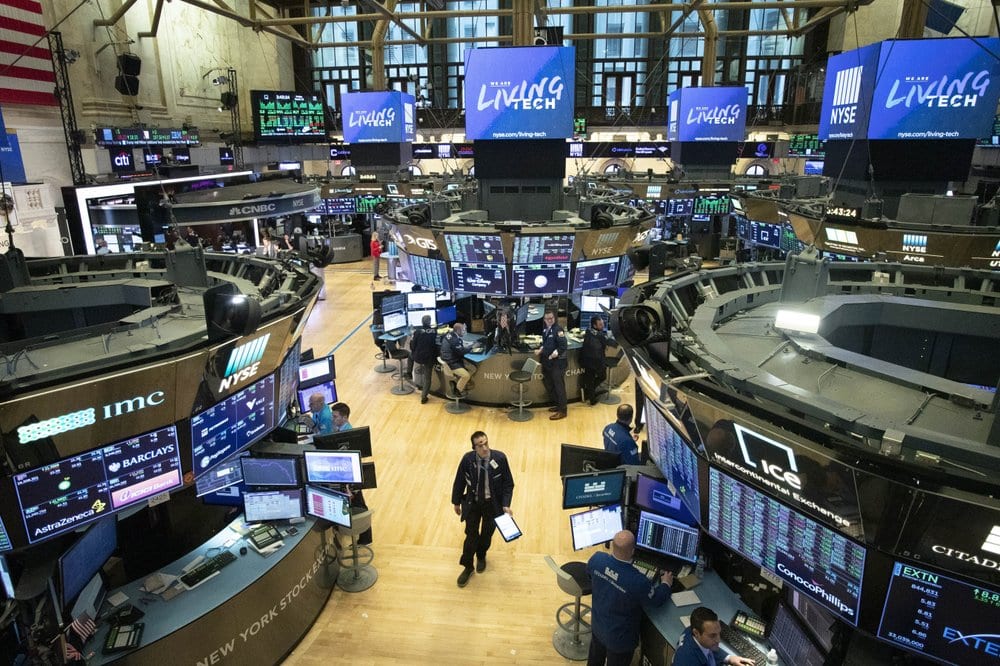
Stocks dropped 8% in the first minutes of trading Monday on Wall Street and triggered another temporary halt to trading as huge swaths of the economy come closer to shutting down, from airlines to restaurants. Emergency actions taken by the Federal Reserve late Sunday to prop up the economy and get financial markets running smoothly again may have raised fears even further, some investors said.
The selling was just as aggressive in markets around the world. European stocks and crude oil were both down close to 10%. The world’s brightest spot may have been Japan, where the central bank announced more stimulus for the economy, and stocks still lost 2.5%.
The spreading coronavirus is causing businesses around the world to shut their doors, which is draining away revenue. That has economists slashing their expectations for upcoming months, and JPMorgan Chase says the U.S. economy may shrink at a 2% annual rate this quarter and 3% in the April-through-June quarter. To many investors, that meets the definition of a recession.
Strategists at Goldman Sachs say the S&P 500 could drop as low as 2,000 in the middle of the year, which would be a 41% drop from its record set just a month ago, before rallying back to 3,200 at the end of the year.
The Federal Reserve has been trying to do what it can to help the economy, and over the weekend it slashed short-term interest rates back to their record low of nearly zero.
It also said it also will buy at least $500 billion of Treasury securities and $200 billion of mortgage-backed securities to help calm the Treasury market, which is a bedrock for the world’s financial system and influences stock and bond prices around the world. Trading in the market began to get snarled last week, with traders saying they saw disconcertingly large gaps in prices offered by buyers and sellers.
“Despite whipping out the big guns,” the Fed’s action is “falling short of being the decisive backstop for markets,” said Vishnu Varathan of Mizuho Bank in a report. “Markets might have perceived the Fed’s response as panic, feeding into its own fears.”
The yield on the 10-year Treasury slid to 0.73%, a sign that investors are flocking into investments seen as safe.
The Fed action came as major economies expanded travel curbs and closed more public facilities, raising the cost of efforts to contain the outbreak that has infected nearly 170,000 people worldwide. China, where the coronavirus emerged in December, accounts for about half of those, but a dozen other countries have more than 1,000 cases each.
Japan’s central bank similarly expanded asset purchases to inject money into the economy and promised no-interest loans to help companies cope with the crisis.
The Bank of Japan also announced plans to provide up to 8 trillion yen ($75 billion) in no-interest, one-year loans to companies that face cash crunches.
The measures came on top of stimulus from other major authorities, including the European Central Bank and the Bank of England last week.
The S&P 500 fell more than 8% within the first few minutes of trading, enough to trigger a 15-minute halt to trading. The Dow Jones Industrial Average lost 2,250 points, or 9.7%, to 20,935, and the Nasdaq was down 6.1%.
Volatility appears to be the new normal following a dizzying week in which the Dow twice fell by more than 2,000 points and also record its biggest point gain ever — 1,985 points on Friday. Last week’s drops also confirmed the end of the longest-ever bull market on Wall Street, which emerged from the financial crisis and ran for nearly 11 years.
The leaders of the Group of Seven developed democracies will hold a call on Monday. European finance ministers are also discussing ways to help the economy keep going through the disruption as some countries in the region unveil stimulus plans, including guarantees for businesses and even individuals’ salaries.
For most people, the coronavirus causes only mild or moderate symptoms, such as fever and cough, and those with mild illness recover in about two weeks. But severe illness including pneumonia can occur, especially in the elderly and people with existing health problems, and recovery could take six weeks in such cases.
Experts expect the disruptions to travel and even to daily life to last for weeks, possibly months.
Many investors expect markets to remain volatile until the number of new infections stops accelerating. They’re hopeful that big spending programs from the U.S. government can help carry the economy in the meanwhile.
___
Republished with permission from the Associated Press.



